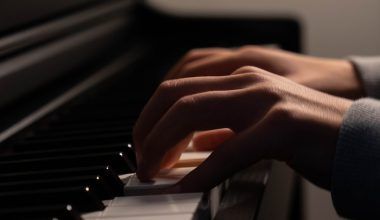Google Music, now integrated within YouTube Music, has evolved into a significant platform for both music lovers and artists. Since its inception, Google Music has undergone numerous transformations, merging with other services to enhance its offerings and cater to the dynamic music industry. This article explores the services Google Music provides for artists and delves into its payout system.
Services Offered by Google Music for Artists
Google Music, through its integration with YouTube Music and other Google services, offers a variety of features and tools for artists to promote their music, reach a broader audience, and monetize their content. Here’s an overview of the primary services available:
- YouTube Music Integration:
- With the merger of Google Play Music into YouTube Music, artists now have access to a vast audience base on YouTube’s platform. YouTube Music offers an artist-friendly interface, allowing for easy uploads, customization of profiles, and the ability to create a visually engaging experience for listeners.
- Artists can manage their content through YouTube Studio, providing tools to analyze performance metrics, audience demographics, and engagement statistics, helping artists tailor their strategies to optimize reach and engagement.
- YouTube Content ID:
- One of the most significant services for artists is YouTube’s Content ID system. This tool allows artists to identify and manage their music’s use across YouTube. When a user’s video includes music that belongs to an artist registered with Content ID, the system can automatically flag, monetize, or block the content based on the artist’s preferences.
- This service is particularly beneficial for artists looking to monetize their music beyond traditional streams, as they can earn revenue from ads placed on videos featuring their music.
- YouTube Music Analytics:
- Google Music, via YouTube Music, provides robust analytics tools that give artists detailed insights into their music’s performance. These insights include information on how often their songs are played, geographical data of listeners, and engagement rates.
- Artists can use these analytics to make data-driven decisions regarding their marketing strategies, such as targeting specific demographics or regions with their promotional efforts.
- Artist Promotion and Playlist Inclusion:
- YouTube Music offers promotional opportunities for artists through curated playlists, which can significantly boost an artist’s visibility. Being featured on popular playlists can lead to increased streams and a broader fan base.
- Google also provides options for artists to promote their content directly through YouTube Ads, allowing for targeted marketing campaigns to reach specific audiences.
- Official Artist Channels:
- Google Music allows artists to consolidate their music under an Official Artist Channel on YouTube. This channel serves as a central hub where fans can find all of an artist’s content, including music videos, albums, singles, and live performances.
- Official Artist Channels also come with a customizable layout, enhanced analytics, and more control over content presentation, providing artists with a more personalized approach to engaging with their audience.
Payout System for Artists
The payout system for artists on Google Music, primarily through YouTube Music, is structured around several monetization models. Here’s a breakdown of how artists earn from the platform:
- Ad-Supported Revenue:
- A significant portion of the revenue generated on YouTube Music comes from advertisements. When users stream music for free on the platform, ads are displayed, and a portion of the ad revenue is shared with the artist. This model is similar to traditional YouTube, where ads play before or during videos.
- The ad revenue is split between YouTube and the content creators, with the exact percentage depending on various factors, including the type of ad and the agreements in place with the artist’s label or distributor.
- YouTube Premium Revenue:
- YouTube offers a subscription service, YouTube Premium, which allows users to enjoy an ad-free experience, offline downloads, and background playback. A portion of the subscription revenue is allocated to artists based on their music’s share of total streams.
- This payout is often more favorable compared to ad-supported revenue, as it is not reliant on ad views but rather on the engagement and listening time of subscribers.
- YouTube Content ID Earnings:
- Artists can also earn revenue through the Content ID system. When their music is used in user-generated content, ads placed on those videos can generate revenue for the artist. This system is especially beneficial for artists whose music is frequently used in viral videos or other popular content.
- The Content ID system provides artists with flexibility in choosing how they want their music to be used and monetized, allowing for a balance between exposure and earnings.
- Super Chats and Channel Memberships:
- Artists who live stream on YouTube can earn money through Super Chats and Channel Memberships. Super Chats allow fans to pay to have their messages highlighted during a live chat, while Channel Memberships provide fans with exclusive perks for a monthly fee.
- These features enable artists to build stronger relationships with their audience and generate additional income beyond traditional streaming.
- Merchandise Shelf Integration:
- Artists can integrate their official merchandise into their YouTube Music channel through the Merchandise Shelf feature. This tool allows artists to display their merchandise directly under their videos, providing a seamless shopping experience for fans.
- Earnings from merchandise sales are separate from music revenue, providing another income stream for artists.





